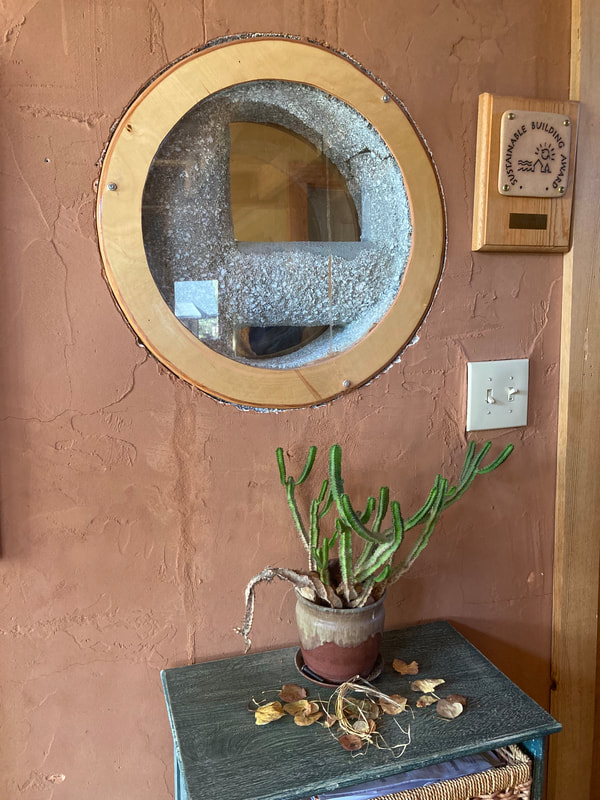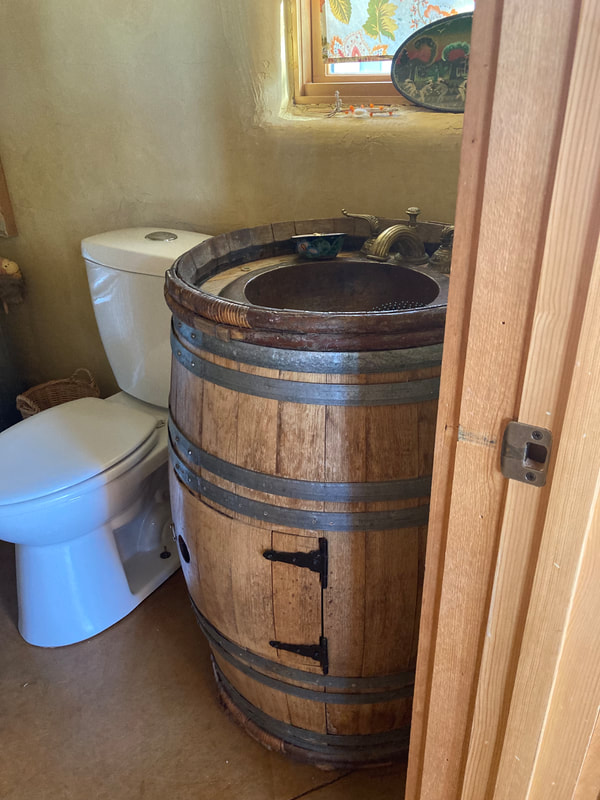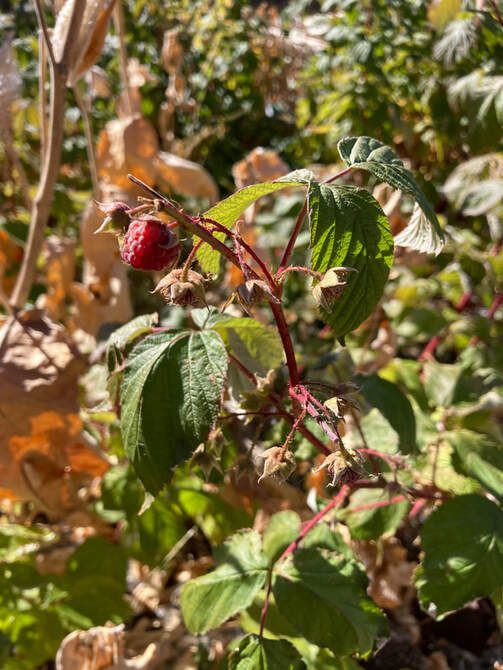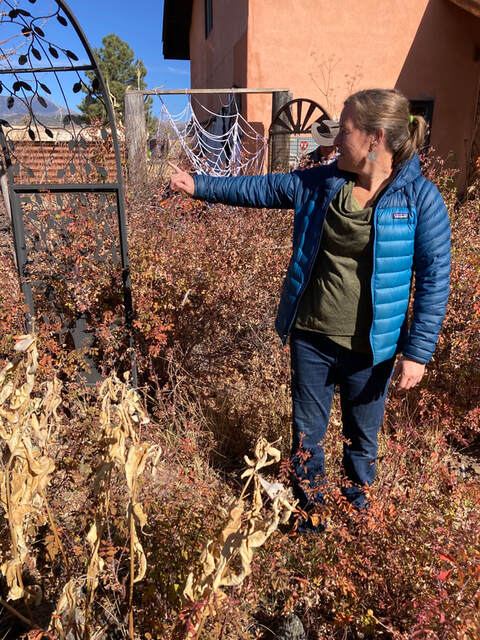Rosemary LoganCheckout the Spring 2020 section of NAU's two-semester Permaculture Design Course Blog! Archives
December 2023
Categories |
Back to Blog
Rosemary's Garden Tour & Plant List11/1/2023 by Stephanie Kohnen On November 1, 2023, our permaculture class visited three Flagstaff homes that featured extensive gardens that embrace permaculture principles. The first site we visited was the home of our instructor Rosemary Logan. Rosemary’s house was built in 2012 and is an example of how permaculture ideals can coexist with practical considerations. For example, the entrance to the structure was shifted so that the building could be oriented with its longest side facing south. This allows the greatest absorption of the sun’s warmth during the cooler months. The strategy is part of a passive solar design that increases a building’s energy efficiency. For the structure itself, Apex Block was used. Not only is it more energy efficient than standard building materials, it also qualified for a construction loan. (Straw bales were not eligible for construction loans at that time.) A truth window (see photo below) shows the Apex Block that makes up the interior of the home’s walls. The walls were then covered in plaster. The home features locally sourced materials whenever possible. Wood beams came from local forests. The homeowners also were creative about repurposing items for different uses such as turning a wine barrel into a bathroom sink. (See photo.) Next, Rosemary took us on a tour of her garden. Although the timing of our visit (late Fall) meant the garden had peaked long before, it was evident that harvest was abundant. Both watering and composting systems focus on resource efficiency – conserving water and time. The garden’s watering system is divided by the needs of different plants: native, orchard and annuals. Compost materials are seasonally trenched directly into garden beds for decomposition. Four-inch pipes located at the center of several raised beds are used for vermiculture. Red wiggler worms are replenished each year. 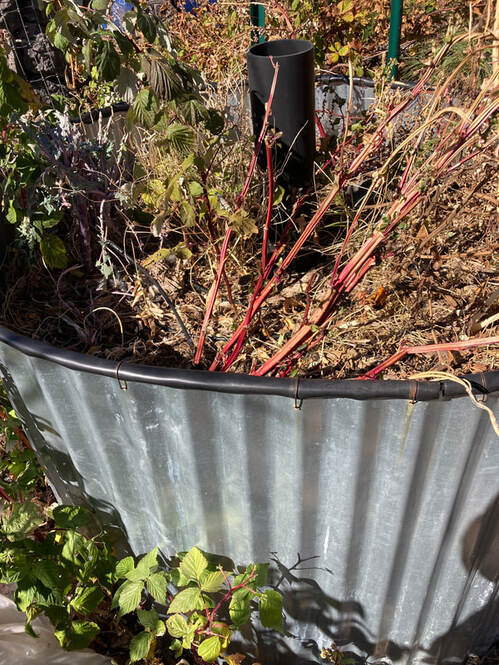 The pipe at the center of this garden bed is used for worm composting (vermiculture). After red wiggler worms are replenished each spring, fruit and veggie scraps can be deposited in the pipe to feed them. Holes have been drilled in the pipe below the soil level so the worms can move freely to access the food and travel around the container. Other tips from Rosemary:
Featured Plants
A garden offers the chance to play and experiment with a variety of plant species. The plants featured in Rosemary’s garden included the following:
Fruit Tree Resource: Trees of Antiquity in upstate New York is a source for well-adapted fruit trees for Flagstaff. OTHER PLANTS On our fieldtrip, we visited two other residential gardens. Below is a list of a few unique plants these gardeners are growing. From Patrick Grant:
From Greg Macallister:
Greg’s kale forest:
0 Comments
Read More
Leave a Reply. |
 RSS Feed
RSS Feed
